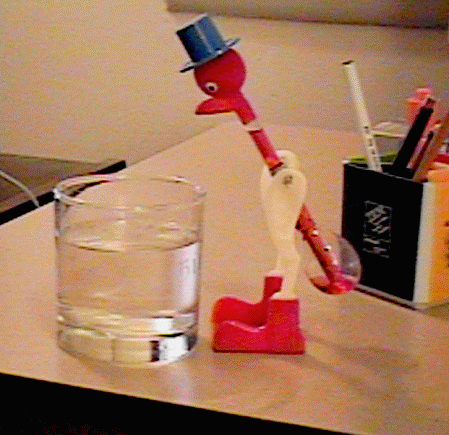The bird works because the liquid it contains has a very low boiling point. The pressure of the vapor phase of the liquid which is in equilibrium with the liquid phase (the vapor pressure) rises with temperature. When the bird "drinks" its head becomes wet with water which cools the top of the bird, causing the pressure of the vapor in the upper chamber to be less than that in the lower. This imbalance forces the liquid up the bird's "neck", until it comes into equilibrium when the pressure exerted by the column of liquid above the surface of that in the lower chamber exactly equals the difference in the two pressures. If that equilibrium point is sufficient for the center of gravity of the bird to be above its "perch" then the bird tips over and "takes a drink". If the level of inclination of the drinking bird is such that the bottom of the "neck" is no longer beneath the surface of the liquid then the higher pressure gas on the bottom forces its way up the tube in the form of bubbles, causing pressure to rise in the upper chamber, forcing liquid back down the neck and raising the temperature of the head. If this is sufficient to lower the center of gravity below the "perch" then the bird's head rises from the liquid it moves to minimize the height of the center of gravity, and the cycle starts again.
